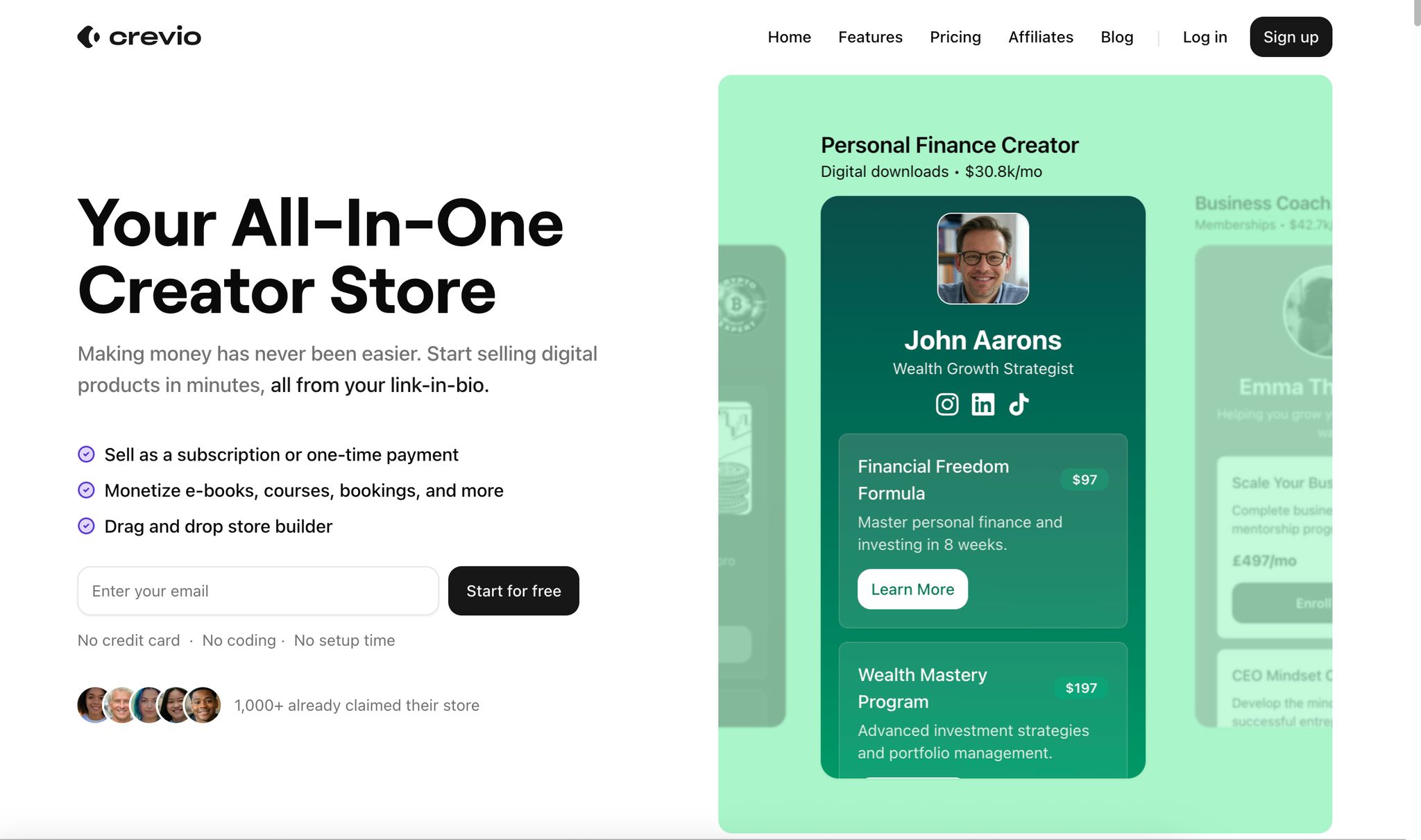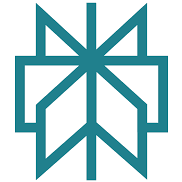How To Make Passive Income Selling Digital Products

Want to earn money while you sleep? Selling digital products is one of the easiest ways to generate passive income. Here’s how it works:
- What is Passive Income? It’s income that keeps coming in with little ongoing effort after setup, unlike traditional jobs where you trade time for money.
- Why Digital Products? No inventory, automated delivery, global reach, and high profit margins make them ideal for passive income.
- Popular Digital Products: Examples include templates, printables, courses, and design assets. Many sellers make $700–$1,500 monthly from a single product.
- Steps to Get Started:
- Find a profitable niche.
- Create a high-quality product.
- Use platforms like Crevio to automate sales and delivery.
- Market your product and grow your audience.
With tools like Canva and Crevio, creating and selling digital products has never been simpler. Start small, focus on solving a specific problem, and watch your income grow over time.
Finding Profitable Digital Product Ideas
Popular Digital Product Categories
The digital marketplace has become a hub for generating passive income. Data highlights several categories that consistently perform well:
| Product Category | Average Monthly Revenue | Price Range | Success Example |
|---|---|---|---|
| Educational Printables | $772 | $10–15 | Single listing generating 66 monthly sales |
| Digital Templates | $1,500 | $15–20 | Notion life planner with 94 monthly sales |
| Design Assets | $936 | $2–5 | Holiday mockup bundle with 313 monthly sales |
| Social Media Templates | $1,086 | $12–15 | Travel-themed bundle averaging 78 sales |
| Financial Tools | $696 | $10–12 | Budgeting spreadsheet with 62 monthly sales |
These numbers can help guide your market research. One standout area is online education, with the course market expected to hit $319 billion by 2025.
Market Research Methods
Finding profitable digital product ideas starts with thorough research:
- Customer Problem Analysis: Pinpoint the challenges your audience faces. Tools like AnswerThePublic can uncover common questions and pain points in your niche.
"Persuasion is figuring out what people want and telling them that’s what you’re selling at a price that feels reasonable." – Joshua Lisec
- Validation Techniques: Test your ideas using social media polls, MVP (minimum viable product) tests, competitor analysis, and direct feedback from potential customers.
Once you’ve validated an idea, focus on a specific niche to make a stronger impact.
Selecting Your Market Focus
Success often lies in targeting a specialized niche rather than trying to appeal to everyone. Take this example from 2023: Andrea, a digital seller, shifted from creating general planners to specialized teacher planners. These catered to specific needs like lesson planning and tracking student progress, which transformed her business.
"Don’t be afraid to go niche. The biggest mistake I made early on was trying to cater to everyone. Once I found my unique angle, everything changed." – Andrea, Digital Product Seller
Look for niches that align with your expertise, emerging trends (like AI tools), underserved markets, or areas with high demand but low competition. For instance, the growing popularity of social media marketing has boosted the need for customizable templates and design assets.
Making Your Digital Product
Product Development Steps
Follow these steps to create a digital product that resonates with your audience:
- Planning Phase
Define your product’s purpose, format, content, and delivery method. Document all requirements and establish a clear timeline to guide the process. - Content Creation
Focus on creating content that addresses your audience’s needs. For example, if you’re working on educational printables, start with clear learning goals and build materials to achieve them. - Design Implementation
Turn your content into a polished product by:- Designing visuals
- Formatting for easy readability
- Maintaining consistent branding
- Preparing the product for digital delivery
Choose the right tools to bring your design to life efficiently.
Required Software and Equipment
The tools you’ll need depend on the type of digital product you’re making. Here’s a quick guide:
| Product Type | Required Tools | Purpose |
|---|---|---|
| Visual Products | Canva Pro | Create templates, social media graphics, presentations |
| Digital Planners | Canva, PDF editors | Format planners and worksheets |
| Online Courses | Video editor, Screen recorder | Produce engaging educational content |
| Templates | Canva, Spreadsheet software | Build customizable templates |
Canva is particularly useful, offering design features, AI tools like Magic Write and Magic Edit, real-time collaboration, and a vast library of templates.
Quality Control Guidelines
Before launching your product, ensure it meets high standards with these steps:
- Pre-Production Checks
Verify file compatibility, content accuracy, design consistency, and brand alignment. - In-Production Testing
Regularly test navigation, download functionality, file size/loading times, and cross-platform compatibility. - Post-Production Verification
- Test the entire user experience.
- Ensure all files are intact.
- Fix any formatting issues.
- Finalize customer documentation for a smooth launch.
Passive Income: Create & Sell Digital Products (STEP BY STEP)
Setting Up Your Sales System
Once your digital product is ready, the next step is to set up a sales system that handles transactions and delivery automatically.
Choosing the Right Platform
Selecting the right platform to sell your digital products is crucial. Look for features that support a hassle-free, automated sales process. Here’s what to prioritize:
- Payment Processing: Secure transactions with multiple payment options
- Automated Delivery: Instant product delivery after purchase
- Customer Management: Tools for managing customer data and communication
- Analytics: Insights into sales and customer behavior
- Customization: Options for branding your storefront and product pages
- Mobile Access: Seamless functionality across all devices
Keeping these features in mind, let’s examine how Crevio can meet these needs.
Selling with Crevio
 Crevio provides a complete solution for digital product creators, offering tools to simplify store setup and product management.
Crevio provides a complete solution for digital product creators, offering tools to simplify store setup and product management.
Store Setup
- Mobile-friendly design for any device
- Support for custom domains
- Flexible content delivery options
- Built-in tools for community engagement
Product Management
- Handles various digital formats
- Offers multiple pricing options
- Secure hosting for your files
- Detailed access control for added security
"Crevio is an excellent platform for creators aiming to monetize their expertise and digital products effectively. The platform strikes a balance between simplicity and functionality, making it a strong choice for both beginners and creators that need an additional level of flexibility." – John Sandy, Content Creator
Once your platform is ready, the next step is to automate your sales processes for steady and reliable income.
Automating Your Sales Process
Automation is key to maintaining a consistent sales flow with minimal effort. Here are the essential components to include:
| Component | Purpose | Implementation |
|---|---|---|
| Payment Processing | Handles secure transactions | Use an integrated gateway with auto-receipts |
| Product Delivery | Ensures instant access | Set up automated, secure file downloads |
| Customer Support | Resolves common issues | Add an FAQ section and automated responses |
| Marketing | Keeps sales consistent | Schedule email campaigns and social content |
Success in automation depends on proper setup and regular monitoring. For example, content creator Paul Rose grew his Medium following to over 28,000 and achieved 273,462 monthly views by consistently delivering content and optimizing his platform.
Pro Tip: Regularly review your automated processes, track key metrics like conversion rates, back up your systems, and test everything to ensure smooth operation.
Growing Your Digital Product Sales
Boost your revenue and scale your digital product business with focused strategies that drive growth.
Marketing Basics
Be present where your audience is most active.
Content Strategy Development
- Identify trending niche topics
- Plan and stick to a content calendar
- Create content that’s easy to share
- Optimize posts for platform algorithms
"If it’s gone viral once, it’ll most likely go viral again." – Paul Rose
Platform Performance Optimization
| Marketing Element | Action Items | Expected Outcome |
|---|---|---|
| Content Quality | Develop detailed, useful posts | Higher engagement rates |
| Posting Schedule | Post consistently | Increased visibility |
| Engagement | Reply to comments and feedback | Build stronger connections |
| Analytics | Monitor performance metrics | Make informed improvements |
Once you’ve built momentum, focus on turning casual followers into loyal customers by creating a connected community.
Customer Community Development
A strong customer community can increase sales through word-of-mouth recommendations and repeat purchases. Communities thrive because they foster ongoing engagement and organic growth.
Community Building Strategies
- Host live events or Q&A sessions regularly
- Offer exclusive content for community members
- Promote user-generated content
- Enable peer-to-peer interactions
With tools like Crevio’s community features, you can create a space where customers connect, share experiences, and access premium resources. This not only boosts customer loyalty but also provides valuable insights for improving your products.
While a thriving community sustains growth, expanding your product offerings can further increase revenue.
Product Line Expansion
Grow your product line thoughtfully while maintaining quality.
"It’s important to diversify your income streams and build different revenue channels as a creator, so you have more control and security over your monthly income." – Hazel Paradise
Strategic Expansion Process
- Market Analysis: Research to uncover gaps and opportunities that align with your audience’s needs.
- Product Development: Add products that complement your existing lineup, such as:
- Advanced versions of current offerings
- Supplementary materials
- Alternative formats of popular content
- Launch Strategy:
- Test with a beta group
- Collect early feedback and make improvements
- Generate excitement through your existing channels
- Roll out the final product strategically
Conclusion: Getting Started
Turn your skills and knowledge into a steady stream of income with digital products. Here’s a straightforward guide to help you kick things off.
Steps to Launch Your Business
Building a digital product business requires careful planning and execution. Take Paul Rose, for example. He grew his following to over 28,000 and achieved 273,462 monthly views in just 5 months by focusing on high-quality products and smart distribution strategies.
| Phase | Key Actions | Timeline |
|---|---|---|
| Planning | Conduct market research, pick a niche | 1–2 weeks |
| Creation | Develop and test your product | 2–4 weeks |
| Setup | Configure your store and automate tasks | 1 week |
| Launch | Roll out content and build a community | Ongoing |
Follow this roadmap to launch your digital product business with confidence.
Your Action Plan
Here’s how to get started:
- Platform Selection and Setup
Pick a platform that aligns with your audience. For instance, launch your Crevio store with custom branding and secure payment options. The Basic plan, priced at $29/month, comes with everything you need, including a mobile-friendly store for your first five products. - Content Strategy Development
Plan a content calendar with 50–100 topic ideas tailored to your niche. Consistency is key – focus on delivering meaningful content that resonates with your audience. - Product Launch Sequence
Start with one high-quality digital product that solves a specific problem. This helps establish trust and credibility with your audience.
As Hazel Paradise wisely said:
"Creating a digital product does more than just provide a new source of revenue; it also gives me surprising insight into my audience and what they like."






